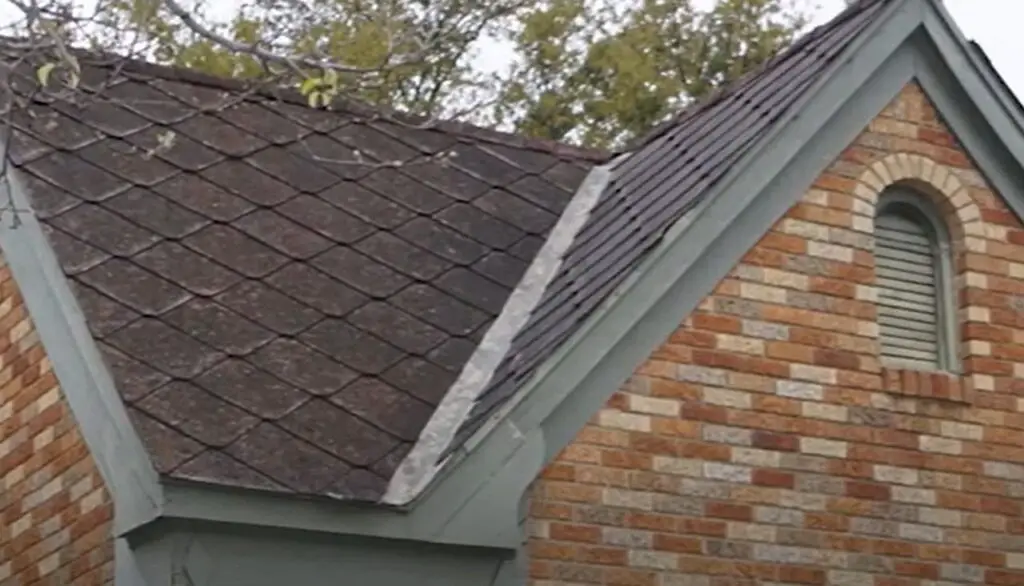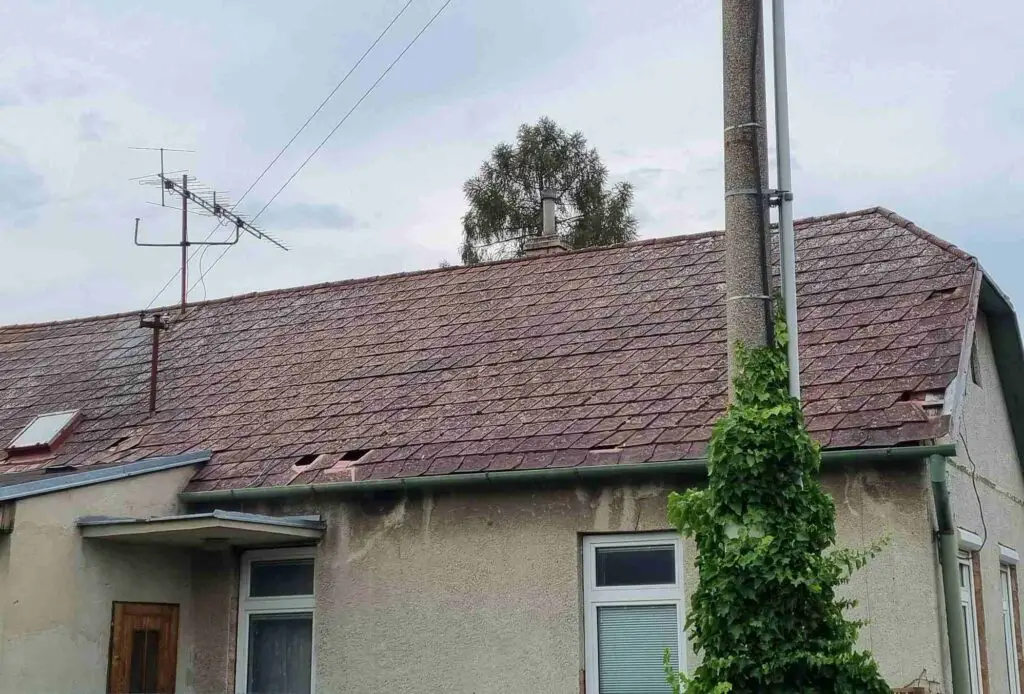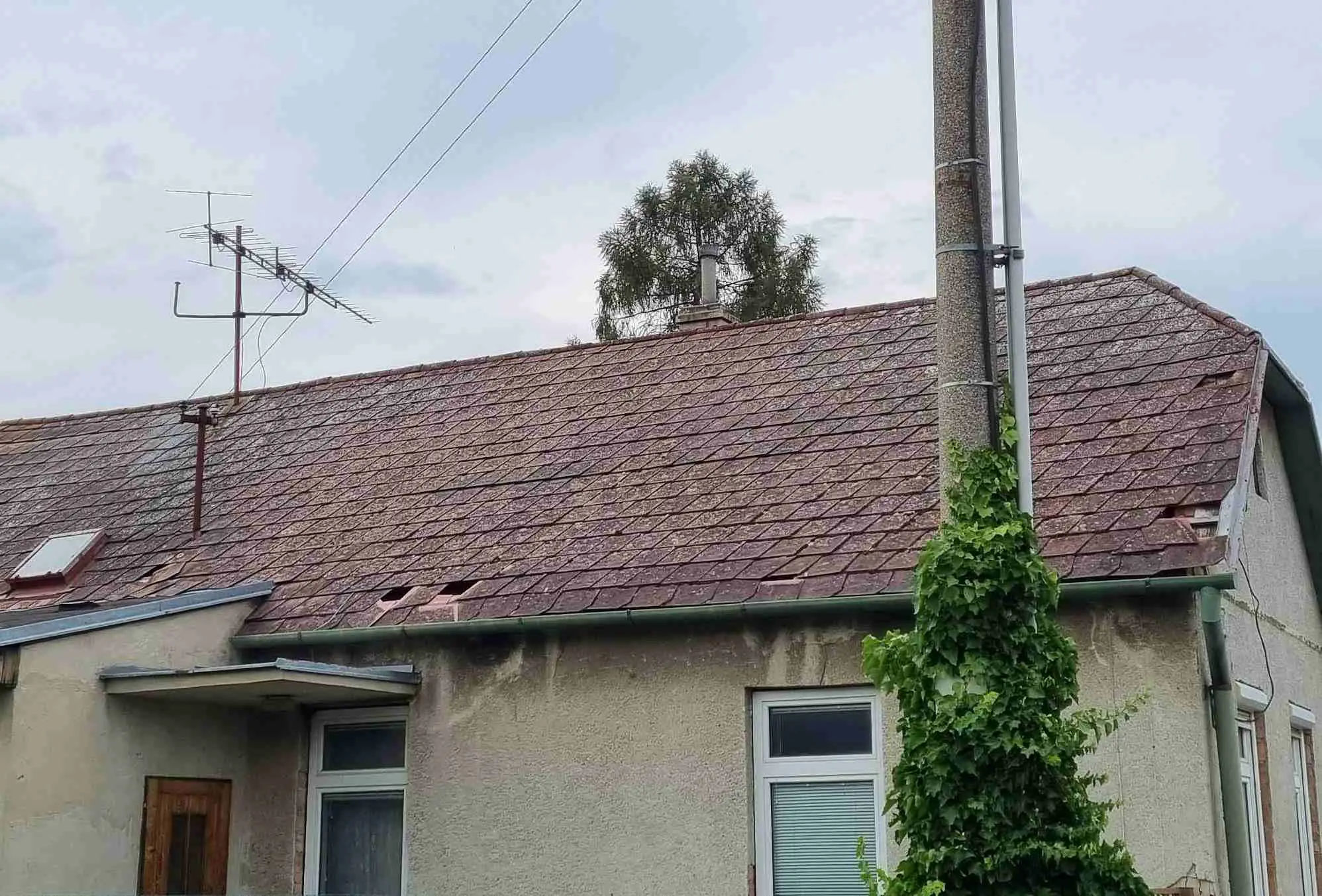Last Updated on: 17th August 2023, 05:12 pm
Asbestos – the word alone can strike fear in the hearts of many. In the field of construction asbestos has been a popular choice for many years, particularly in the 20th century. It was commonly used for roofing due to its durability and fire-resistant charactersitics. However, as we have gained more knowledge about it, we have come to understand that it is not without its drawbacks. So let’s begin with the fundamentals, ladies and gentlemen, shall we?
Table of Contents
- What is Asbestos and Why Was it Used in Roofing?
- Is Asbestos Still Used in Shingles?
- Understanding Dangers of Asbestos
- When Does Asbestos Become a Health Hazard?
- Alternatives to Asbestos Tiles
- Does Every Shingle Have Asbestos in 2023?
- Can You Roof Over Asbestos Shingles?
- Identifying Asbestos: Key Points to Remember
- The Role of Asbestos in Flat Roofs
- Understanding the Color Palette of Asbestos Shingles
- Health Risks: What Cancers are Caused by Asbestos Exposure?
- Wrapping Things Up
- Final Thoughts
What is Asbestos and Why Was it Used in Roofing?
Asbestos is a group of six naturally occurring fibrous minerals. Back in the day, people loved it ’cause it was fire-resistant. Add durabliity and cost-effectiveness to the mix, and voila! A star was born in the building industry. It was a goto choice for roof shingles, helping keep homes warm and safe. But, dears! Not everything that shines is gold.
However, you might wonder, was it used just for its heat resistance? Nope. Asbestos was also admired for its sound absorption and tensile strength. Now, imagine having a roofing material that ticks all these boxes. Sounds like dream, right? But, unfortunately, this dream had a pretty terrible nightmare attached.

Is Asbestos Still Used in Shingles?
I hear your question. Is asbestos still around, sneaking into our shingles? Well, folks, the short answer is no. After the health risks came to light, many countries banned asbestos. But don’t be too quick to braethe a sigh of relief. While brand new asbestos roofing is pretty much a thing of the past, old asbestos roofs may still be lurking around, especially in older homes.
Sure, the asbestos ban has been in place for a while. But we know that asbestos roofs can last up to 60 years. Well, while they stopped making ’em, they didn’t go and remove all existing ones. So, old buildings, particularly from the 20th century, might still have the draeded asbestos roofing. And that’s where things get tricky.
Understanding Dangers of Asbestos
Why exactly is asbestos so dangerous? Well, it’s not so much asbsetos itself. It’s tiny asbestos fibers that can be inhaled when the material is disturbed. These little fibers can get lodged in your lungs and cause a host of health issues, from lung cancer to mesothelioma, another aggressive form of cancer. Not exactly a fun party.
Yeah, the health risks are real, and they’re scary. Just breathing in asbestos dust can put you at risk. And also here’s kicker: symptoms might not even appear until decades later. Now, that’s ticking time bomb nobody wants to deal with. It’s why asbsetos got boot from the building industry.
When Does Asbestos Become a Health Hazard?
Asbestos becomes health hazard when it’s damaged or disturbed. That’s when the tiny asbestos fibers can become airborne and be inhaled. It’s particular problem during renovations or demolitions. And if you’re not aware that there’s asbestos in your home, you could be putting yourself at risk without even konwing it.
But don’t go hitting the panic button just yet. It’s not like every old house is death trap. If the asbestos material is in great condtiion and isn’t being messed with, the risk of exposure is low. But if it’s in poor condition, or if you’re planning some major renovations, you might want to get expert asbestos survey done.

Alternatives to Asbestos Tiles
Enough with the doom and gloom, let’ s talk solutions. There are plenty of safe and effective alternatives to asbestso tiles. For instance, asphalt shingles are a popular choice. They’re durable, cost-effective, and available in variety of styles and colors. Metal roofing is another good option, offering durability and energy efficiency.
There are loads of materials to choose from, each with its pros and cons. You’ve got evreything from wood to slate to vinyl. So if you’re looking at roof repair or replacement, take your time, do your research. Also, pick what works best for you and your home.
Does Every Shingle Have Asbestos in 2023?
Now let’s get back to 2023. Do all shingles these days have asbestos? The answer is a resoundnig no. Most, if not all new shingles on the market are asbestos-free. Thanks to asbestos ban and the development of safer materials, asbestos has been pretty much kicked to curb in roofing world.
But that’s not to say there’s zero risk. As we’ve discussed, older homes might still have asbestos shingles. So if you’re buying an older home or doing renovations, it’s worth checking for the prseence of asbestos. Safety first, as they say.
Can You Roof Over Asbestos Shingles?
Roofing over asbestos shingles? It’ s a tempting idea. Why not just cover up the problem, right? But hold your horses. It’s not that simple. In some cases, it might be feasible. But it’s a deicsion that should only be made with a thorough asbestos survey and professional advice. You don’t want to mess around with this stuff.
To put it bluntly, roofing over asbestos shingles is risky business. You could release asbestos fibers during the process, and you’ re not really solivng the problem, just hiding it. Plus, local building codes might have something to say about it. So before you make any decisions, get facts.
Identifying Asbestos: Key Points to Remember
Identifying asbestos isn’t always easy. It’s not like its comes with warning label. But there are few things to be careufl for. Age is big one. As we’ve mentioned, if your house was built in the mid-20th century, there’s chance its could have asbestos materials.
Texture is another clue. Asbestos-cement shingles usually have a rough surface, plus they’ re often tihcker than modern shingles. But these are just guidelines. To know for sure, you’d need to get an asbestos sampling done by a expert. Better safe than sorry, right?
The Role of Asbestos in Flat Roofs
Asbestos was not discriminatory in its usage – it was used everywhere, incluidng flat roofs. Why? Well, asbestos had a knack for durability and fire-resistance, qualities that are always desirable in roofing. In the 20th century, flat roofs regularly had built-up roof system made of alternating layers of roofing felt and hot-applied asphalt, and you guessed it, sometimes the felts contained asbestos. These layers then were topped with a reflective roof coating to keep building cool.
The asbestos in flat roofs had same potential health risks as in any other asbestos-containing material. If the roofing system became worn or damaged over time, asbestos fibers could be releasde into air during repair or replacement. It’s critical, as with asbestos shingles, to have suspected asbestos material checked out by a professional before starting any renovation work.
Understanding the Color Palette of Asbestos Shingles
Asbestos shingles were not limited to any specific color. Back in day, these shingles entered a broad array of hues, making them appealing to homeowners searching for aesthetic flexibility. From red to blue, to brown, grey. And even green, these shingles offered a broad color palette. This variety is another reason teyh were so prevalent, as they could be made to mimic more exepnsive roofing materials.
However, it’s worth noting that the color of asbestos shingles can fade over time, often resulting in a weathered, greyish appearance. This can sometimes make them harder to distinguish from non-asbestos shingles. If you’re unsure, it’s always best to consult with an asbestos expert who can test for presence of this hzaardous material.
Health Risks: What Cancers are Caused by Asbestos Exposure?
Asbestos exposure is linked to several types of cancer, the most well-known of which is mesothelioma. This rare and aggressive form of cancer affects the lining of lungs, abdomen, and heart, and its is almost exclusively caused by asbestos exposure. It’s an insidious disease, frequently lying dormant for decades before sympotms emerge.
In addition to mesothelioma, asbestos exposure can lead to lung cancer, particularly in those who have been haevily exposed or who also smoke. Asbestosis – a progressive long-term respiratory condition caused by inhaling asbestos fibers, isn’t a cancer, but its can severely impair lung function and lead to other serious health problems, including lung cancer. It’s clear that asbestos isn’t substance to be trifled with; the health risks are severe and life-altering.
Wrapping Things Up
So, there you have it, folks. Asbestos was once hailed as miracle material. But we’ve regain consciousnses realize that it’s not without its dangers. From lung cancer to mesothelioma, the health risks associated with asbestos are serious and far-reaching. But with knowledge, caution, and right professionals on our side, we can navigate the challenges posed by asbestos and protect our health and our homes.
Remember, if you’re dealing with asbestos in your home, don’t go it alone. Reach out to a licensed contractor or an asbestos abatement company. They have the training and equipment to handle asbestos safely and effectively. And if you’re not sure if your precious home contaisn asbestos, get it tested. It’s better to be safe than sorry.
Final Thoughts
As we move forward, let’s continue to learn from our past and strive for a safer, heatlhier future. Let’s invest in safer building materials, stricter regulations. Also, better protections for workers. And let’s remember that while asbestos may be a thing of the past, its impact is still very much present concern.
So, stay informed, stay safe, and remember, that there are resources and professionals out there who can aid. And also as always, if you have any questions or concerns, don’t hesitate to reach out. We’re all in this together, dears.
